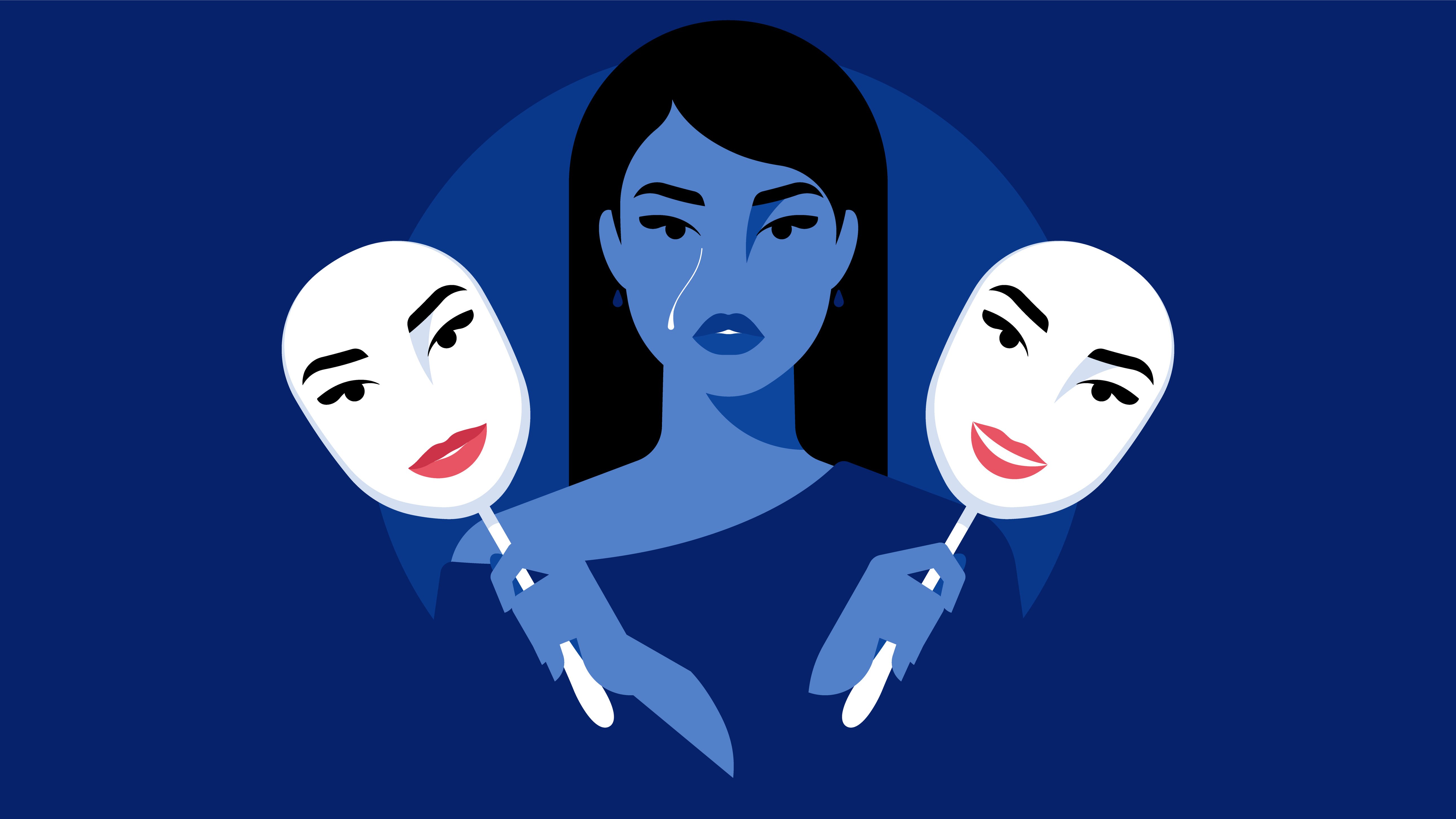Feeling insecure is an all-too-common part of life. In a world that expects us to strive endlessly for perfection with no room for mistakes, remaining secure in one's self and one's achievements can be difficult. But what happens when those feelings of insecurity become constant, even when an individual is successful?
This is labelled as Imposter Syndrome, and it is said to affect those who are minorities, women, or are simply unable to 'fit in' to the established norms of society. But can this label be misleading? Is it wrong to classify such a feeling as a disorder when it could be the result of a more complex set of issues?
How insecure are you?
Ever felt too scared or embarrassed to voice our opinion in a meeting? Ask for a raise? Apply for a job or promotion? Or negotiate your salary? This often happens because we fear that others may discover our perceived flaws and criticize or reject us.
Insecurity is inextricably linked to the human condition. Whilst it may seem undesirable, it is in fact a necessary tool in regulating our behavior and monitoring our interactions. It keeps us introspective and prompts us to seek out ways to grasp our environment and improve our social skills. Additionally, it comes with a stellar set of benefits such as conscientiousness, empathy, hard work ethic and memory power.
“Many of us, some 40 percent, can identify as being shy in a social situation and the shy, introverted individuals of the world are actually the backbone of humanity and play an incredibly valuable part in researching, developing and reinforcing group harmony.”
On the other hand, the complete absence of insecurity and lack of timidness and inhibition - a trait possessed by only 1% of the population - is indicative of a pathology: Psychopathy!
Realistically, wouldn't you agree that it is better to have an overactive socioemotional smoke detector when there is no threat rather than risk missing a more serious, hidden danger?
What is Imposter Syndrome (IS)?
Or rather, imposter phenomenon.
First, it is important to differentiate between phenomenons, syndromes, and diseases.
A disease usually has a definite cause, distinguishing symptoms and treatments, whereas a syndrome is a collection of signs, symptoms and/or behaviors which might not always have a known cause. Lastly, a phenomenon is an observable fact or occurrence.
As IS became a buzzword, many "definitions" have been floating around, and going back to the source might help shed some light in understanding its true meaning.
In 1978, the term 'imposter phenomenon' - NOT IMPOSTER SYNDROME - was introduced by Pauline R. Clance and Suzanne A. Imes in the article "The Imposter Phenomenon in High Achieving Women: Dynamics and Therapeutic Intervention". In this article, Clance and Imes described the imposter phenomenon as the experience of 'intellectual phoniness' among high achieving women.
This research was conducted among 100 women, that had achieved professional excellence and received recognition from their peers for their scholarly or academic accomplishments. Despite such tangible evidence of their success, many of the women attributed their success to mere luck and thought that their capabilities had been overestimated.
To summarize, "imposter phenomenon" is therefore an observable fact or occurrence of various symptoms and/or behaviors that include:
- Feeling incompetent while clearly exhibiting competence,
- Being scared of failing to meet someone else's expectations,
- Denying the hard work and successes to luck,
- Believing to never be able to maintain the same level of accuracy,
- Getting embarrassed or uncomfortable when praised,
- Being unhappy with achievements,
- Doubting capabilities,
- Feeling overwhelmed by the need to do more and better,
- and being distraught by fear of inadequacy.
What causes imposter syndrome?
Clance and Imes linked this lack of acknowledgement of their success to factors such as gender stereotypes, family dynamics, and cultural norms.
Further, these women displayed symptoms of generalized anxiety, low self-confidence, depression and difficulty in meeting their own self-imposed standards of excellence.
Women and Minorities' Vulnerability to Imposter Syndrome
It is said that Imposter phenomenon is more pronounced among minority communities such as non-white people and the LGBTQIAP+ community and women.
Be it a KPMG study, that reveals that 75% of women holding leadership roles in a variety of industries have reported having felt the effects of imposter syndrome during their careers; Or a psychotherapist and executive coach in New York that states that "Women, women of color, especially black women, as well as the LGBTQ community are most at risk" on BBC; we have been exposed to the hammering of such "facts".
But Why?
One reason that minorities and women may be more likely to experience the imposter phenomenon is that they may face added pressure to “prove their worth” in an environment where they may already feel marginalized.
Countless research have shown that women and minority groups are often judged differently than their white male counterparts, with their abilities and accomplishments being minimized or dismissed.
Call it gender stereotype, social stereotype, racism, xenophobia, ethnicity or nationality stereotype, and so forth... The fact is, stereotypes are pervasive throughout social structures and our culture as a whole. From a young age, they shape the way we think and behave toward one another. These preconceptions often persist into adulthood, resulting in people engaging with each other in predefined and frequently limiting ways.
This can lead to prejudice, as people charge those prejudged with a one-dimensional view, without recognizing their individuality, and is expressed through behaviors such as verbal abuse, exclusion or rejection. And ultimately to discrimination, when it evolves to actions taken against someone based on their social group like exclusion from opportunities or resources, or even physical abuse.
Though we are all subject to stereotypes, women and minorities are in constant exposure and experience social identity vulnerability. They always feel the need to perform more to overcome the stigma, the veiled prejudice.
In this, it is common that the person mixes what society expects from him/her with what he/she feels and thinks about him/herself.
Stop telling women they have imposter syndrome
Following the logic expressed by Ruchika Tulshyan and Jodi-Ann Burey in their Harvard Business Review article, one of the lesser-investigated considerations concerning imposter syndrome is what motivates its presence within women and minorities in the workplace and how work practices amplify it.
As a matter of fact, when the idea of imposter syndrome was initially formed, the systemic racism, classism, xenophobia, and other forms of bias were not taken into account. This means that numerous groups, such as women of color, people of varying economic backgrounds, genders, and professional experiences, were not included in the study conducted by Clance and Imes.
Even currently, imposter syndrome functions in such a way that puts the responsibility of the phenomenon on individuals, rather than accounting for the intricacies of the historical and cultural contexts impacting them.
And the struggle with self-doubt that women and minorities may particularly experience in corporate employment is not the result of some innate deficit within them. It is created by a system that puts them at a disadvantage and does not fully equip them to meet standards that their peers may not have had to confront. As such, the pressure to excel can be more excessive and overwhelming.
The result is that those unable or unwilling to adjust to favor the social standards in place are often accused of having "imposter syndrome".
Is imposter syndrome a mental illness?
If not, how do we "cure" it?
Despite the fact that imposter syndrome is widely used in therapy rooms, coaching sessions, roundtables, or workplaces discussions worldwide, it is not classified as a mental disorder by the World Health Organization (WHO) and doesn't need a cure.
Tackling all the above stated misconceptions starts with recognizing Imposter Syndrome or rather Imposter Phenomenon for what it is and create lasting solutions including the larger societal themes that it often stems from.
This means that instead of simply attributing outsized doubts to a universal phenomenon, we should be examining the damaging standards that produce such feelings of self-doubt and lack of capability in individuals in the first place.
At the societal level, addressing entrenched discrimination and systemic injustice should be paramount. Variety in our structures and policies should be nurtured. Schools and workplaces should not only provide equal opportunities, but also educate on why such opportunities are important, as well as discouraging any discriminatory behavior.
At the family level, parents have an incredible opportunity to set a good example and teach their children to accept and respect difference. Parental education should incorporate awareness of their own stereotypes, and how they can avoid them.
The individual level should also be addressed. Each and every person should do their best to be conscientious of their actions, and be aware if/when they are being prejudicial.
Finally, an environment should be created that embraces, accepts and encourages each difference. This could involve different styles, genders, races and ethnicities. By considering these three levels - society, family and individuals - together, we can create a society of understanding that will empower each one to fully realize their potential.







